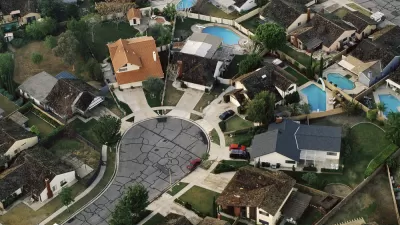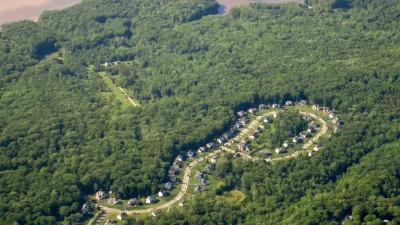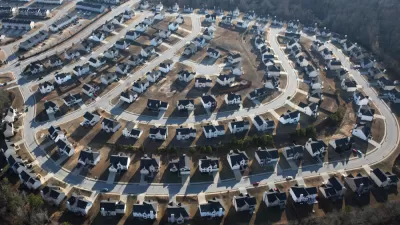In the 1930s, The Federal Housing Authority embraced the trend towards cul-de-sacs, decrying the standard street grid as monotonous and unsafe. Norman Garrick and Wesley Marshall have proven otherwise.
Garrick and Marshall's research shows that yes, the person living on the cul-de-sac is safer - if they never leave their block. But the suburban road structure that makes cul-de-sacs possible is more dangerous than a grid.
Emily Badger talked with Garrick and Marshall, as well as Scott Bernstein of the Center for Neighborhood Technology:
"Garrick and Marshall compiled data on 230,000 crashes spanning 11 years in 24 medium-sized California cities. And they began to parse and classify street patterns in a kind of taxonomy."
"In their California study, Garrick and Marshall eventually realized the safest cities had an element in common: They were all incorporated before 1930. Something about the way they were designed made them safer."
FULL STORY: Debunking the Cul-de-Sac

Trump Administration Could Effectively End Housing Voucher Program
Federal officials are eyeing major cuts to the Section 8 program that helps millions of low-income households pay rent.

Planetizen Federal Action Tracker
A weekly monitor of how Trump’s orders and actions are impacting planners and planning in America.

Ken Jennings Launches Transit Web Series
The Jeopardy champ wants you to ride public transit.

Crime Continues to Drop on Philly, San Francisco Transit Systems
SEPTA and BART both saw significant declines in violent crime in the first quarter of 2025.

How South LA Green Spaces Power Community Health and Hope
Green spaces like South L.A. Wetlands Park are helping South Los Angeles residents promote healthy lifestyles, build community, and advocate for improvements that reflect local needs in historically underserved neighborhoods.

Sacramento Plans ‘Quick-Build’ Road Safety Projects
The city wants to accelerate small-scale safety improvements that use low-cost equipment to make an impact at dangerous intersections.
Urban Design for Planners 1: Software Tools
This six-course series explores essential urban design concepts using open source software and equips planners with the tools they need to participate fully in the urban design process.
Planning for Universal Design
Learn the tools for implementing Universal Design in planning regulations.
Heyer Gruel & Associates PA
Ada County Highway District
Institute for Housing and Urban Development Studies (IHS)
City of Grandview
Harvard GSD Executive Education
Toledo-Lucas County Plan Commissions
Salt Lake City
NYU Wagner Graduate School of Public Service





























